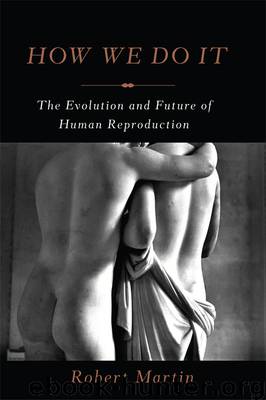How We Do It by Robert Martin

Author:Robert Martin
Language: eng
Format: epub
Publisher: Basic Books
CHAPTER 6
Feeding Babies: A Natural History of Breast-feeding
In the mid-1960s, I spent two years doing doctoral research with Konrad Lorenz at the Max Planck Institute in Seewiesen, Germany. My goal was to study the behavior of a breeding colony of treeshrews, squirrel-like inhabitants of Southeast Asian forests, in order to explore their evolutionary relationships. At the time, treeshrews were thought to be the most primitive living primates. So I figured that a detailed study of their behavior should yield clues to the habits of the common ancestor that gave rise to all living primates. Quite unexpectedly, I soon uncovered evidence that something was seriously wrong with the notion that treeshrews are close relatives of primates—and my discovery came from reproduction. Intensive mothering of well-developed infants is one of the most striking features that all primates share. Yet I found that a mother treeshrew makes a separate nursery nest where she gives birth to a litter of poorly developed babies, hairless and with their eyes and ears sealed. The most surprising thing is that she leaves her infants alone in their nursery, sleeps in her usual nest, and returns briefly to suckle them only once every forty-eight hours. During their monthlong stay in the nursery nest, the mother spends a total of just over an hour with her infants. Maternal behavior in treeshrews is the rock-bottom minimum found in mammals, contrasting starkly with the extensive mothering shown by all primates. This stunning discovery launched me on a lifetime’s odyssey to find out how primates really did evolve.
As the previous chapter showed, mammal mothering is linked to brain size. Moreover, diligent parenting is often associated with strong social bonds. In all mammals, mothers invest in their infants’ brains not only during pregnancy but also through suckling after birth. And wild-living mothers generally respond to newborn infants with appropriate care. Unlike infant treeshrews, our babies need intense, extended parental care. For a young couple returning home with their first newborn baby, parenthood can seem daunting. Advice is abundantly available, particularly through the Internet, but it covers a whole spectrum ranging from suggestions that a baby should be breast-fed for up to seven years to assurances that bottle-feeding is equally good and more convenient to boot.
Because culture has greatly influenced mothering in all modern human societies, it is not easy to decide what is “natural” for our own species. In the past, self-appointed experts concerned themselves with tidy rules, providing advice that largely ignored biology. Up to the middle of the nineteenth century, physicians and guidebooks rarely proposed routine schedules for breast-feeding. Then things changed quite rapidly as the industrial revolution gathered pace and working mothers became commonplace. By the beginning of the twentieth century, rigid breast-feeding schedules were the norm in the industrialized world. This new approach to breast-feeding, accompanied by reduction of the recommended duration from two years to one, was fostered by pioneering pediatricians Luther Emmett Holt in New York and Thomas Rotch in Boston. Parallel trends occurred in England, France, and Germany.
Download
This site does not store any files on its server. We only index and link to content provided by other sites. Please contact the content providers to delete copyright contents if any and email us, we'll remove relevant links or contents immediately.
| Amphibians | Animal Behavior & Communication |
| Animal Psychology | Ichthyology |
| Invertebrates | Mammals |
| Ornithology | Primatology |
| Reptiles |
Sapiens: A Brief History of Humankind by Yuval Noah Harari(13924)
The Tidewater Tales by John Barth(12374)
Mastermind: How to Think Like Sherlock Holmes by Maria Konnikova(6898)
Do No Harm Stories of Life, Death and Brain Surgery by Henry Marsh(6662)
The Thirst by Nesbo Jo(6409)
Why We Sleep: Unlocking the Power of Sleep and Dreams by Matthew Walker(6307)
Life 3.0: Being Human in the Age of Artificial Intelligence by Tegmark Max(5152)
Sapiens by Yuval Noah Harari(5095)
The Longevity Diet by Valter Longo(4838)
The Body: A Guide for Occupants by Bill Bryson(4542)
The Rules Do Not Apply by Ariel Levy(4490)
The Immortal Life of Henrietta Lacks by Rebecca Skloot(4226)
Why We Sleep by Matthew Walker(4173)
Animal Frequency by Melissa Alvarez(4127)
Yoga Anatomy by Kaminoff Leslie(4086)
The Hacking of the American Mind by Robert H. Lustig(4054)
All Creatures Great and Small by James Herriot(3954)
Barron's AP Biology by Goldberg M.S. Deborah T(3927)
Double Down (Diary of a Wimpy Kid Book 11) by Jeff Kinney(3879)
